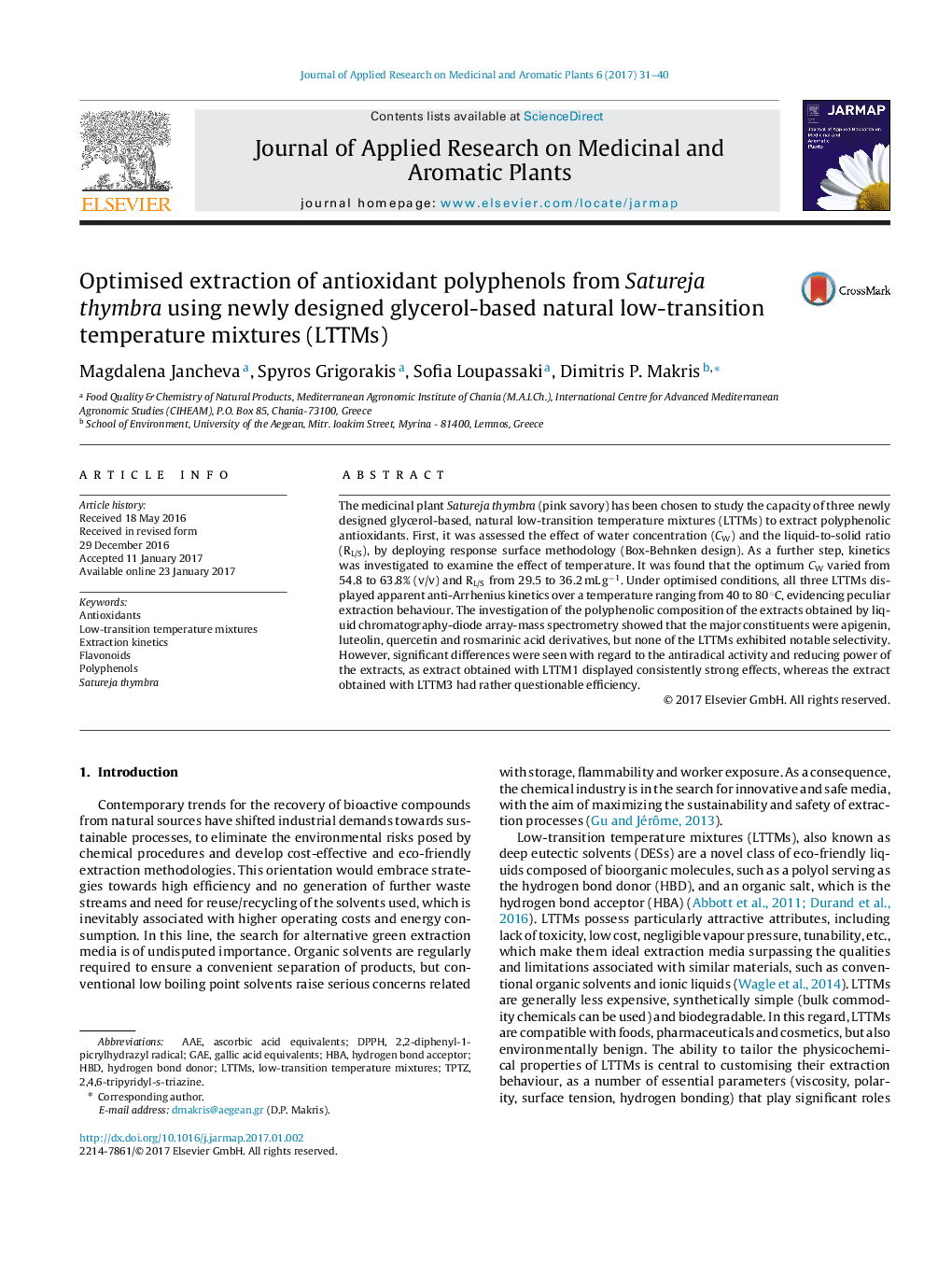| Article ID | Journal | Published Year | Pages | File Type |
|---|---|---|---|---|
| 5635175 | Journal of Applied Research on Medicinal and Aromatic Plants | 2017 | 10 Pages |
â¢Synthesis of novel natural LTTMs.â¢Polyphenol extraction from Satureja thymbra.â¢Use of response surface methodology and kinetics.â¢Evaluation of the in vitro antioxidant activity.â¢Liquid chromatography-diode array-mass spectroscopy characterisation of major polyphenols.
The medicinal plant Satureja thymbra (pink savory) has been chosen to study the capacity of three newly designed glycerol-based, natural low-transition temperature mixtures (LTTMs) to extract polyphenolic antioxidants. First, it was assessed the effect of water concentration (CW) and the liquid-to-solid ratio (RL/S), by deploying response surface methodology (Box-Behnken design). As a further step, kinetics was investigated to examine the effect of temperature. It was found that the optimum CW varied from 54.8 to 63.8% (v/v) and RL/S from 29.5 to 36.2 mL gâ1. Under optimised conditions, all three LTTMs displayed apparent anti-Arrhenius kinetics over a temperature ranging from 40 to 80 °C, evidencing peculiar extraction behaviour. The investigation of the polyphenolic composition of the extracts obtained by liquid chromatography-diode array-mass spectrometry showed that the major constituents were apigenin, luteolin, quercetin and rosmarinic acid derivatives, but none of the LTTMs exhibited notable selectivity. However, significant differences were seen with regard to the antiradical activity and reducing power of the extracts, as extract obtained with LTTM1 displayed consistently strong effects, whereas the extract obtained with LTTM3 had rather questionable efficiency.
